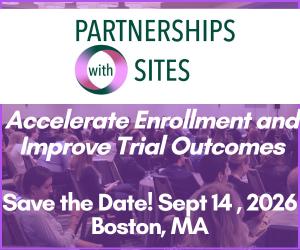How Pfizer Is Solving Data Integration and Interoperability
Amy Cramer provides an update on Project Vulcan and HL7 FHIR, and how collaborations are already testing data-sharing abilities in connect-a-thons. She is a Director on the Global Product Development Strategic Team at Pfizer, Co-Chair of HL7 FHIR® Accelerator Vulcan, dedicated to translational and clinical research and a TransCelerate member.

What are the latest developments with Project Vulcan and FHIR?
The goal was to bring together the whole research community: large pharma companies, academic medical centers, government agencies, patient perspectives, and large tech companies, to work on problems. We start with why we need Vulcan; that’s because we fully need to integrate research into the delivery of healthcare by streamlining data collection and exchange into a singular process, which means that at the point of time that the clinician is collecting data, it should be collected in a way that could be reused for other purposes, including research. It’s not an additional thing for them to fit into their workflow, but it actually becomes part of a workflow. We need to have that bidirectional flow of data to and from the researchers and the clinicians, but also bidirectional to and from the patient.
In order to reach that vision, we’re collaborating with the international research community to align clinical data and clinical research data at the point of collection. We’re going to be doing this by developing out the HL7 FHIR standard to support this bidirectional flow of data.
What are the guiding principles of Vulcan?
The guiding principles that we use: Bridge existing gaps to connect industry collaboration. One of the key components of Vulcan is that we do not want to replicate anyone’s work. We’d rather partner with individuals’ work. If we strategically connect and we work together, then we can obviously maximize collective resources, because the workflow of research goes through many different hands and many different perspectives. We need to be able to hear all those voices at the table, so that whatever process is built out end to end, is really going to be a very streamlined process and not create a bottleneck in another location.
It becomes really important to have the international community. So what’s really exciting is that we have clinicians from Japan who are engaged; we have folks from Europe who are engaged and we’re getting other geographical areas becoming engaged.
Why is the international cooperation so crucial?
This is really important because research is a global entity. We want to make sure that we all work together to come up with the best process that we can, while maintaining that compliance, regulatory guidance, and the geographical culture of any specific area.
And then the last thing is that if we all just talked about it, that would be nice but it wouldn’t really be helpful. And that’s where we need to deliver integrated tools and solutions. In January, we had our first workgroup meeting. And at that meeting, there was a connect-a-thon, a process that you go through, in order to iteratively try out the standard, find the gaps for it, and then take it back to the standards development process. You’ll keep doing this circular process until the standard is built out in a way that we know it can be used. It’s a live testing ground where people come together, and start exchanging data using that standard.
"The data should move seamlessly across systems as appropriate."
What does Vulcan’s end goal look like on the ground?
In my opinion, it should be a bidirectional flow of data. So the data documented in the EHR for clinical care should be documented in a way that we can use it for clinical research. The other thing is clinically relevant data that’s being used in a clinical research setting: that should be accessible to the clinician in near real time, because it is data around the patient’s health.
And then there also has to have that third piece in there: it has to have bidirectional flow of data back to the patient. That includes the data we’re collecting, but also the end results of the study. Even if the study wasn’t successful, I would want to know how it turned out. For a lot of people, who have been in studies that have gone on to make huge changes in the way we’ve provided care. And they were part of the reason why.
Letting people who are participants know what the outcome of their research, in the most compliant way, is really important. That’s what we’re talking about when we talk about interoperable exchange of data. The data should move seamlessly across systems as appropriate.
We still have to keep all of the required safety, patient privacy, compliance, regulatory, data sharing and data usage agreements. It’s just that it shouldn’t be so onerous to, when appropriate, exchange it.
What is the infrastructure that you think is needed to be able to pass data back and forth?
In Vulcan, we talk about standard development. And part of development is how data is captured at the point of care. But mostly Vulcan is around how is the data exchange: terminologies and how to build out the resources to fit our use case, the domain analysis models, who the data has to exchange with, etc.
The infrastructure is more how to implement in the end. That will be part of Vulcan, and that’s where the connect-a-thons come into play. In the connect-a-thon, vendors actually come and they actually start exchanging the data. It’s all mock data, but they start exchanging following that standard.
So you find out, “If I only use those resources, it doesn’t really quite give me everything I need. I also need to know the patient’s XYZ. So I need to add that piece of information in for the data to make sense.”
This is the DIKW pyramid. At the bottom of it is data. I could say to you “21.” You don’t know what that is; you’re going to assume it’s probably “2021.” But what I was talking about was somebody’s respiratory rate. So the next layer of it is information. What we need to do is, once we exchange the data, make sure it’s coming across as information. And then the next layer is how to make knowledge out of that information. And then the final one is wisdom.
In my mind, that’s really what research is doing. It’s taking the data to information to knowledge so that we can get to wisdom and really create.
Part of Vulcan as we move forward will be these implementation projects. But we’ve started doing that work already through the connect-a-thons.
The vision is a process that’s developed out by all those individuals, because what other otherwise what will happen is we may have somebody who will say, “This is the way we want to exchange our data outside of our site firewall,” and then pharma will say, “That’s great, but we can’t ingest that data that way; our systems aren’t set up for it.” Or they say, “We need to accept the - data into this system, because it is built to translate the data.” What we really need to work on is to come up with that, but without getting supporting any one way or commercialization.
The final project will be an implementation guide, but that has to come at the consensus of the entire community. It takes a little bit of time.
Where are we in this journey of reaching what Vulcan sees as an endpoint?
We’re always going to be finding innovative ways to do things better, right? But where can we get to a point where we can really start to interoperably exchange data? I think we’ve already started that.
We have several different organizations that are using FHIR to exchange data for research right now. Those are our trailblazers, and they’re on the cutting edge. And now we have this huge interest; there’s many organizations that are coming together really sending out this message of collaboration. Now we have so many other voices here with these early adopters, and we can start to look at how we can scale and adopt this.
And that’s where the challenge is going to be. At this point, the technology basics are there; they need to get developed out further, but there’s a process to do that. The next thing is consensus building and adoption. That’s going to take a little bit more time.
Some people say it takes about 5-10 years to develop things and get certain regulatory agencies to move forward. But people may not be aware of how long regulatory agencies have been investigating and actually funding projects that are dedicated to the use of HL7 FHIR for research.
My goal would be that, by this time next year, we have the capability to exchange data from at minimum, EHR to a pharma company, that is scalable and reproducible and that we have more than one vendor or way to do this. We need to have either one that’s completely free or we need to have different companies competing in the market.
Is there anything that you’d be curious to know from another person about how they’re doing this?
Yes: What are their plans on scaling this and how are they overcoming the learning curve and encouraging adoption without getting themselves into a situation where they’re only working with an individual company? Because we need to have that open market in order to be successful in this.
And scaling into different companies, vendors, partners, countries, but also additional data domains. So most people who are currently using FHIR for research are able to do the same data domain. But what data domains are they scaling to?
My goal would be that, by this time next year, we have the capability to exchange data from at minimum, EHR to a pharma company, that is scalable and reproducible and that we have more than one vendor or way to do this.
To learn more about Clinical Research as a Care Option, visit CRAACOevent.com.







